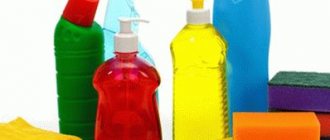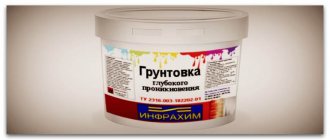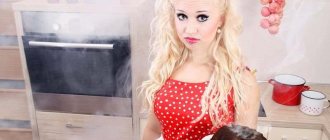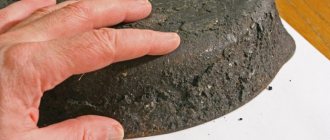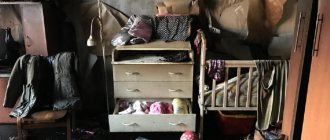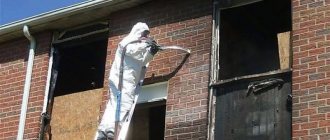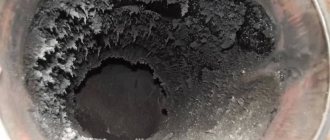A fire is an uncontrolled combustion process that results in material losses and people dying. Depending on the strength of the fire, soot and fumes appear. Manifestations can form during the operation of stoves and fireplaces. There are various means that can be used to remove soot from walls, ceilings, furniture and other surfaces after a fire.
Preparation
You need to start cleaning your apartment after even a minor fire with preparatory measures. It is better to prepare everything in advance to ensure a successful wash. They take into account in which rooms the surfaces need to be cleaned and what material they are made of. The quantity of soot and its quality play a role. It is necessary to clean everything so that soot particles do not eat into the walls and furniture.
Degree of pollution of the apartment
The quality of soot cleaning in an apartment depends on the degree of its settling on the surface. If everything is covered with a thick layer of soot, then you will have to have the furniture professionally cleaned. And some items will have to be thrown away. After all, they will emit a smell in the apartment for a long time, which is difficult to get rid of.
Taking things out
Before cleaning, all things are taken out, completely emptying the rooms. This makes it easier to deal with major contaminants. If possible and weather conditions permit, then take objects and things into the open air. In winter you can go to the balcony or loggia, or to the basement.
Removing curtains, drywall, carpets, baseboards
A room free of furniture is cleared of those things that cannot be washed immediately:
- If the curtains on the windows are just dusty, then they can be washed thoroughly in an automatic machine. Covered with a thick layer of soot, you can’t clean it off. You should say goodbye to them.
- Walls and plasterboard products will be cleaned using dry methods. But the fumes are deeply embedded in them, so it is better to replace such parts of the interior with new ones.
- Carpets strongly absorb odors and soot particles, so they must be removed. It's worth getting them dry cleaned.
- The question of whether it is worth tearing off the baseboards should not arise. To prevent soot from remaining inside them, they are removed. It is better to replace them with others over time. Plastic ones can be washed and reattached after cleaning.
All work is performed wearing a mask, goggles, and gloves. Windows and doors should be opened.
Ventilation
It is difficult to work in an apartment with a persistent burning smell. Therefore, it is necessary to leave it for a day or two with the windows open. You can also use non-aggressive liquids to freshen the air.
Inventory
For cleaning, you will need tools to remove most of the dirt . In addition to the usual containers, brushes, you must have a vacuum cleaner. After all, they start with dry cleaning of the layers of soot.
See also
How to quickly wipe off liquid nails at home
Bowl, bucket
The container is chosen for washing in such a way that it is comfortable to hold in your hand when washing ceilings or windows. For the walls you need a bucket.
Vacuum cleaner
They pass the vacuum cleaner over the ceilings and walls from the beginning of cleaning. It should be ordinary, not detergent. Select hard brushes for it so that dust can be cleaned well from surfaces.
Rags
For washing you will need soft rags that absorb moisture well. They will have to be changed several times as they become dirty. Therefore, it is worth purchasing a special rag for washing in the store.
Broom
Use a broom to sweep away small dirt and sweep the floor. After the procedure, it is washed, dried and continued to work.
Scoop
It is advised not to sweep soot from the walls onto the floor, otherwise the resulting layers will be difficult to remove. Therefore, you need a large scoop. Then sweep the floor dry, immediately removing the soot.
Hard bristle brush
After sweeping away the surface debris, you need to clean the surfaces with a dry brush. Effort should be made to remove heavy stains. The brush should be used with sharp strokes from top to bottom.
Brushes and spatula
Layers of soot must be removed with a spatula. Removal of deep contaminants with the tool is successful. Then use a brush to sweep away small particles.
Roller, tray for it
A sponge roller impregnated with special substances for dry cleaning can be purchased at a hardware store. It comes with a tray for collecting soot.
Cleaning methods
Before cleaning begins, all items should be removed from the room.
Cleaning an apartment after a fire occurs in several stages:
- Preparatory: Collection and removal from the premises of things that cannot be restored.
- Throwing away books and plastic interior parts.
- Transfer of surviving items.
- Covering the floor with newspapers or oilcloth.
- Removing wallpaper, plaster and paint residues with a spatula.
- Degreasing of treated surfaces. For these purposes, special fat-breaking agents are used.
Wet cleaning is carried out only after dry cleaning. Otherwise, the soot will become firmly embedded in the surfaces and it will be impossible to clean the apartment.
Cleaning algorithm
After the equipment is ready, put on a work robe or overalls. Hair is tucked under a headscarf or cap. Use a mask and goggles, and rubber gloves on your hands.
Getting rid of trash
All things must be taken out before general cleaning. There is no need to leave plastic curtain rods or baseboards damaged by fire. The same applies to a suspended ceiling that is partially damaged. It will have to be torn down and taken out. Remove damaged linoleum or tiles from the floor. All items, carpets, and upholstered furniture are given to professionals for cleaning.
Dry cleaning of the premises
You need to start cleaning using the dry method. If the floor is in good condition, then it is covered with paper or film. The edges of the covering should be secured with tape. First, clean the ceiling and walls with a vacuum cleaner. Then remove the remaining wallpaper with a spatula. From top to bottom, brush vigorously with a stiff brush. We must try not to rub soot into the surface structure. For cleaning, you can use rollers with sponges soaked in special solutions.
They use a broom to sweep away all the soot, construction debris, and scraps of wallpaper from the floor.
Useful tips
The ceiling is decorated with chandeliers and all kinds of spotlights. And, of course, even the cleanest ceiling will not sparkle in a new way if there are dusty lighting fixtures on it. It happens that a bulky crystal or glass chandelier with many elements is difficult to remove from the ceiling. Then, using a stable table or stepladder, wash it directly on the ceiling. First, do not forget to unscrew the light bulb and insert paper into the socket.
As for spotlights, it is better to disassemble them for complete cleaning. The room must be de-energized and the lamps carefully removed. If you are afraid that you won’t be able to put everything back in place later, take a photo of the sequence in which you disassembled the structure. You can try to clean the lights without removing them. But then it will not be possible to fully clean the dirt from the inside that has accumulated between the ceiling and the lamp. In addition, there is a risk of damage to the tension surface. You may accidentally press down and enlarge the cuts made for the flashlights. There is also a risk of breaking the connection of electrical wires.
How often to wash the ceiling is up to you. It all depends on how many times a year you do general cleaning in the apartment, whether you wash the floors every day and wipe off the dust. After all, its particles settle on the ceiling, and over time turn into dirt under the influence of various factors. Where the ceiling is located also plays an important role.
A suspended ceiling located in the kitchen loses its original appearance faster than its “brothers” installed in the rooms. No matter how neat the owner is, the hanging structure will get dirty someday, and it will be “decorated” with grease and soot. Tension fabrics here need to be washed much more often than in other rooms, at least twice a year. And if the family is large and the cook is constantly steaming, frying, boiling and baking something, then general cleaning is required even more often. Otherwise, it will be very difficult to clean the ceiling well later.
Other rooms also have their own characteristics:
- In the bathroom, the ceiling suffers from limescale deposits, which in turn form steam and drops. In a large family, it will be useful to install a horizontal curtain; it will protect the upper part of the room from premature plaque.
- The suspended ceiling on the loggia needs to be wiped weekly with a dry towel. Here the coating will constantly gather dust, especially if there is a road nearby.
- In the living room you can afford to install a glossy multi-level ceiling with all kinds of lamps. This structure can be cleaned once a year during global cleaning.
- Fabric and matte canvases are typical for offices and bedrooms. Materials containing an antiseptic layer can simply be wiped with gauze.
- The same applies to hallways. But children’s rooms will most likely need wet cleaning as they become dirty; most likely this will happen more than once a year, or even twice, but much more often.
For more useful tips on how to wash a suspended ceiling, watch the following video.
spring-cleaning
The main part of cleaning, the most labor-intensive, consists of washing soot from the ceiling and walls. Here you will have to use a large amount of warm water with a rag. You will have to constantly change rags and water as they become dirty. The work must be done slowly and thoroughly, so that after washing the wall looks clean and free of soot. You can't do this with water alone: you'll need special detergents.
DIY cleaning liquids
Folk remedies are used to clean smoked walls. They can be found at any housewife. But they are used according to the rules in order to get a positive result from cleaning.
See also
How to quickly remove shoe paint from shoes, the best cleaning methods
Soda ash solution
Soda ash is poured into hot water. For 0.5 liters, 2 tablespoons of the product are enough. Wet a rag or brush and rub it along the walls with sweeping movements. You cannot rub soot into surfaces, otherwise it will be difficult to wipe it off later.
Dish detergent solution
Soap solutions are prepared from warm water with the addition of dishwashing liquid. In 5-7 liters you need to dissolve 1 tablespoon of concentrate. First, wash the ceilings, then the walls and floors with rags. But at the end you should dip the brushes in the solution and rinse them clean.
Toilet bowl cleaner solution
It is necessary to choose alkaline compounds, since soot in the room becomes greasy to the touch and is difficult to deal with. If you use Domestos, it will not only clean contaminated surfaces, but also disinfect them and eliminate unpleasant odors.
How to clean soot
The first thing to do is to move the furniture away from the damaged area and, if possible, remove it from the room. Remove large pieces of soot using a spatula or vacuum cleaner. Remains of contamination can be removed using a folk or special ready-made product that is designed to remove such stains.
Folk remedies
If you need to restore a stove, chimney or other damaged surface to proper condition, you can use a folk remedy made from improvised materials. The easiest way to clean the chimney and the inside of the stove. To do this, just add salt, potato peelings or aspen firewood to the fire. This method can also be used for prevention to protect pipes from unwanted damage.
If you need to clean soot from the walls, ceiling or floor, you can prepare one of the following folk remedies:
- A soda solution consisting of 2 tablespoons of soda dissolved in 2 glasses of water.
- A soapy solution made from dishwashing or toilet detergent dissolved in water.
In this composition, you should thoroughly moisten the sponge and treat the damaged surface with light movements. After the soot has softened, you can try to scrub it off with a brush, and then re-treat it with a sponge soaked in a folk remedy. If after cleaning there are stains on the chimney or the surface is damaged, then it should be additionally treated with a primer.
Important!
When trying to wash away soot after a fire, you should first put on a respirator, closed clothing and gloves. When interacting with water, it will begin to release caustic toxic substances; it is very important to protect the skin and respiratory organs from them.
Ready set after a fire
It is easier to deal with the problem by purchasing a special ready-made product for treating damaged areas from soot. This product is easy to use. To do this, it is enough to moisten the damaged area by spraying the composition on it or treating it with a soft sponge. To improve the effect, you need to preheat the air temperature in the room to 25 degrees.
Sometimes it is necessary not only to clean the surface from visual damage, but also to get rid of an unpleasant odor. The ready-made special kit after a fire also includes a special liquid. To refresh the room, it is enough to treat the areas affected by soot with it, then open the window and ventilate the room throughout the day.
Professional compositions
You can also wash off soot after a fire using one of the ready-made products:
- Mazbit+ is a product designed to clean surfaces after a fire or smoke. It is an aqueous base containing organic and alkaline substances. Therefore, it easily copes with stains, while being safe for health.
- “Facade Cleaner No. 2” is another effective concentrate designed to clean contaminants from the surface of building materials. Its advantage is the presence of a spray bottle, which allows you to significantly save its consumption.
- "Chist-Dezo" is a special chemical composition designed to remove burning stains and odors. It effectively affects combustion molecules, causing them to volatilize and split.
- “BZ-2” is another effective cleaner that allows you to wash soot off the ceiling and any other surface. Additionally, it is endowed with antibacterial properties.
The method of using each product is identical. To do this, you need to dilute the active composition with water, apply it to the damaged area using a sponge or spray bottle and wait until it is completely absorbed. After this, just wash it off with a damp cloth. To find out in what proportions the active substance should be diluted with water and how long it needs to be completely absorbed, you need to carefully study the instructions.
Professional compositions
If it is not possible to invite cleaning company workers to put your home in order after a fire or smoke, then you can try to bring the apartment back to normal using special chemicals. They are produced to remove traces of soot and soot on various surfaces.
"Bitumaz"
The product contains 30% alkali, so safety precautions should be observed when using it. Before use, dissolve 10-100 ml of concentrate in 1 liter of water. Apply to soot-contaminated surfaces with a brush or spray. After leaving the solution for several minutes, rinse with clean water.
Mazbit+
A reinforced concentrate of alkalis and organic detergent additives is suitable for removing soot from the walls of rooms and furnaces. The product is odorless, so it can be used in enclosed spaces. It is applied with a roller or brush. After 20-30 minutes, wash off or clean with a hand tool.
Facade cleaner No. 2
An indispensable assistant for cleaning premises from soot and burning is a concentrated alkaline solution. For use, a 5-25% dilution in water is required. Apply the concentrate without dilution to heavily contaminated surfaces. Leave for 5-7 minutes, then wash off several times with clean water until the soot is completely removed.
BZ-20
A concentrated foam product will help in general cleaning of rooms smoked from faulty stoves after a fire. Dilute the cleaning liquid 20-40 times with warm water if working manually. Leave on walls and ceilings for 3-5 minutes until completely washed off. Can be used again as a cleaning concentrate. Then the solution should have a concentration of no more than 2%.
"Chist-deso"
The universal cleaner has a slightly alkaline composition. The liquid dissolves well in water. The effectiveness lies in the fact that the concentrate thoroughly cleans all types of surfaces. 25-500 ml per bucket of water is enough. You can use the product at the end of general cleaning to wash the walls clean. After it, the smell disappears and the room is disinfected.
Several reasons for contamination of suspended ceilings
The materials from which tensile structures are made must be impregnated with a special agent, the main purpose of which is to protect the surface from such unfavorable factors as moisture, dust and various stains.
If the installation of the ceiling was carried out in compliance with technology, then its attractive appearance will delight the owners for a long time. However, over time, the flawless surface becomes covered with dust, which dulls the original brightness of the color.
The presence of children in the house guarantees that the canvas will sooner or later suffer from a water pistol with some kind of coloring solution or from splashes of soda.
If you believe the recommendations of experts, any tension surface should be cleaned at least once a month.
How to purify the air
In a smoky apartment or house, the smell of burning lingers for a long time. After cleaning, you should try to get rid of it.
Special means to combat odor after a fire
You can eliminate the smell after smoke or fire using different means:
- Place a pan of water on the fire and pour vinegar into it. For 3 liters of water you need 1 liter of acid. After boiling, leave the heat on low and keep the container for 2 hours.
- Whole coffee beans or ground powder are scattered onto saucers and left for a day in the apartment rooms.
- Throw pieces of lemon and orange into the water and boil for 10-15 minutes. You can set fire to the dry peel of any citrus.
- Boiling cloves will also remove the smell.
- The salt solution (10 tablespoons per liter of water) is left overnight indoors.
- Fresh herbs of sage, mint, wormwood, spruce branches, pine trees are laid out on paper. As the herbs dry, the strong burning smell will be replaced by a pleasant aroma.
See also
25 ways to clean your toilet yourself at home
You can safely choose any method. If the cleaning is done correctly, then over time there will be no consequences from the fire.
Using an ozonizer
The fumes are removed using a special device that treats the premises with ozone gas. Rooms are cleaned within 3-10 hours. Before the procedure, indoor flowers are taken out and pets are removed. It is better to turn on the device after wet cleaning. It is strictly prohibited to be in the room while the ozonator is operating. A large amount of ozone will cause disturbances in the functioning of the human respiratory system.
Causes of suspended ceiling contamination
Dust is the main cause of stains and dirt. The use of antistatic agents is only 10-15% effective. Yes, they work, but only if the kitchen is rarely used.
When settling on the surface, small particles create a feeling of unkemptness, impart yellowness, and blur the gloss. Caring for suspended ceilings in the kitchen is not difficult, but a lot depends on the quality of the finishing material.
There are 3 causes of pollution:
- Fat particles bounce off the pan on the stove and settle on the ceiling.
- Steam rises during cooking, forming condensation and gradually drying out.
- Nicotine, the tars of which are difficult to remove.
It is recommended to select the cleaning method depending on the type of contamination. Stretch ceilings are a common finishing material. It has certain advantages:
- durability;
- stylish look;
- variety of surfaces (glossy, matte, mirror);
- ease of care.
Maintaining the aesthetic appearance of a stretch ceiling is not difficult. This is primarily achieved through regular wet cleaning.
Manufacturers and installation specialists have established several basic operating rules. By following them, you will extend the life of the ceiling, and the canvas will look like new.
Features of washing various surfaces
In one house there are coverings made of different materials. Therefore, you need to know how soot is washed off from each of them, and in what ways.
Laminate and plastic
You can remove soot from the floor and furniture using solvents. They easily clean laminate flooring from soot. And plastic coverings are wiped with a rag soaked in kerosene. Industrial alcohol also cleans well.
Plastic
Window frames are wiped with window cleaning liquid. Soda gruel or products like Pemoxol clean the material well.
Glass
Glasses are cleaned with crumpled paper. Then it should be washed with window cleaning liquids. It is necessary to carry out the operation several times, changing rags.
Wood and metal
Soot eats into wooden coverings strongly. You will have to remove the top layers with sandpaper or a sander. Both river sand and brick chips will do. But polished and varnished surfaces cannot be cleaned in this way.
Metal coatings can be easily removed from soot if they are brushed with soapy water and soda.
Water-based paint
Ceilings and walls are cleaned with a solution of industrial alcohol. If the soot is covered in a thick layer, it is better to remove the top layer of paint. Whitewashing with lime can be washed off with warm water and the walls can be renewed again.
Brick
The bricks are washed from burning using a soap solution. If the layer of soot is strong, then wipe with vinegar after pre-moistening with water. Then brush over the brickwork.
Protective varnishes for lining processing
The optimal choice is water-based moisture-proof varnishes with high thermal insulation characteristics, used to create a durable polymer coating.
Varnish compositions are of the following types:
- Acrylic. Universal products designed for treating bath surfaces. They protect wood from contamination, are easy to apply and dry quickly. The only drawback of the compositions is the appearance of an unpleasant odor when heated, so they can be used for the dressing room and rest room.
- Alkyd. Provide reliable protection from high humidity and hot steam. Disadvantages include: long drying time, unpleasant odor.
- Water-based. Environmentally friendly and safe compositions, dry quickly and do not emit a strong odor when heated. It is allowed to process the lining in a bath in the washing and steam departments.
- Polyurethane. Used for internal and external protection of bath surfaces from color fading. They can be completely transparent or colored.
- Acrylic-polyurethane. The formulations are designed to combat mold and pathogenic microorganisms. In addition, they give the wood an attractive shine and polishing effect.
How to cover wooden lining in various functional areas of the bathhouse? For this you can use the following compositions:
- “Eurotex Sauna” is an acrylic-based varnish that contains wax and an antiseptic. It reliably protects the wooden surface from high temperatures. In addition, the varnish prevents the accumulation of moisture, the formation of mold and the development of microorganisms. The product is absolutely safe and has a neutral odor.
- Interier Sauna is a colorless antiseptic acrylic composition designed to protect wooden surfaces. Not used for ceilings.
- “Pirilax” is a complex of antiseptic preparations used in old and new baths to protect the lining from contamination, fire and corrosion. The compositions are ideal for rooms with special operating conditions - steam rooms, dressing rooms and washing rooms.
Results
As you know, it is better to prevent a problem than to deal with its consequences later. Therefore, if you have built a new home, it is advisable to immediately use preventive measures. After all, then removing soot from the chimney will be much more difficult than throwing special means into the firebox.
In order for your heating structure to work and heat at full capacity, it is better to use some tricks that will definitely come in handy during the heating process. It is better not to use firewood that is obtained from coniferous trees. The resin they contain, along with the soot, settles on the walls of the chimney, making the removal of soot in the chimney very problematic.
Firewood from deciduous trees will help remove soot from the chimney or prevent its formation. Do not burn household waste, especially plastic and plastic products. The soot formed during the combustion of such elements almost firmly adheres to the walls of the chimney. Even special means and aspen firewood will not help burn out soot in the chimney. Even mechanically it will be very difficult to clean it.
As you can see, there are many ways to get rid of soot and improve the operation of the furnace. Which one to choose is up to you. It is desirable, of course, that the method you choose is safe. Therefore, you should not use extreme tips for burning large amounts of aspen wood in the stove. After all, you don’t want the soot in the chimney to catch fire, and then the pipe simply cracks.
After you have completed all the work on cleaning the pipe, it is advisable to check it for chips and cracks. If problems are identified, be sure to carry out minor repairs. All cracks must be repaired using a special solution. Be sure to look at the chimney, part of which is located in the attic. It's better to check again.
Application of vinegar essence
It is necessary to dilute the product with water in a ratio of 1: 2, then thoroughly mix the two components, then apply the prepared product to the soft side of the sponge. Afterwards, all that remains is to wipe the contaminated surfaces with the composition until streaks appear, then rinse the sponge and reapply the diluted essence. This should be done until the soot completely disappears from the surface. Then you need to wipe it with a damp cloth.
On a note! If the soot layer is thick enough, then the vinegar is not diluted, but used in its pure form.
Conclusion
After reading this review, you are convinced that cleaning the ceiling from soot is not so difficult. The main thing is to choose the right technology and means and work carefully so as not to damage the surface. The video in this article will tell you additional information on the topic, and if you don’t understand something, write questions in the comments.
Did you like the article? Subscribe to our Yandex.Zen channel
December 1, 2016
Operations with ceilings, Ceilings, Ceiling structures
If you want to express gratitude, add a clarification or objection, or ask the author something, add a comment or say thank you!
Main recommendations
An important rule is to never use water or abrasive devices to clean wood walls. Immediately exclude such aids as:
- bleach or other chlorine-containing preparations;
- water;
- abrasive sponges;
- metal brushes;
- liquid soap;
- cleaning powders;
- sprayers;
- Karchers and steam cleaners.
Cleaning soot from the ceiling in a bathhouse Source alfaclean.by
Using a mechanical method to clean soot and deposits in a bathhouse Source remontnik.ru
When cleaning a bathhouse, be sure to follow safety rules and wear items of clothing that make contact with chemicals safe. These items include:
- working headdress (cap, headscarf, scarf);
- latex gloves;
- plastic buckets, basins (metal may oxidize);
- petal respirator (a four-layer gauze bandage is also suitable);
- robe;
- protective glasses.
When using special cleaning products for wood, be sure to read the instructions. Otherwise, you may harm the wood partitions.
Petal brush for cleaning wooden walls in a bathhouse Source ecosrub.ru



